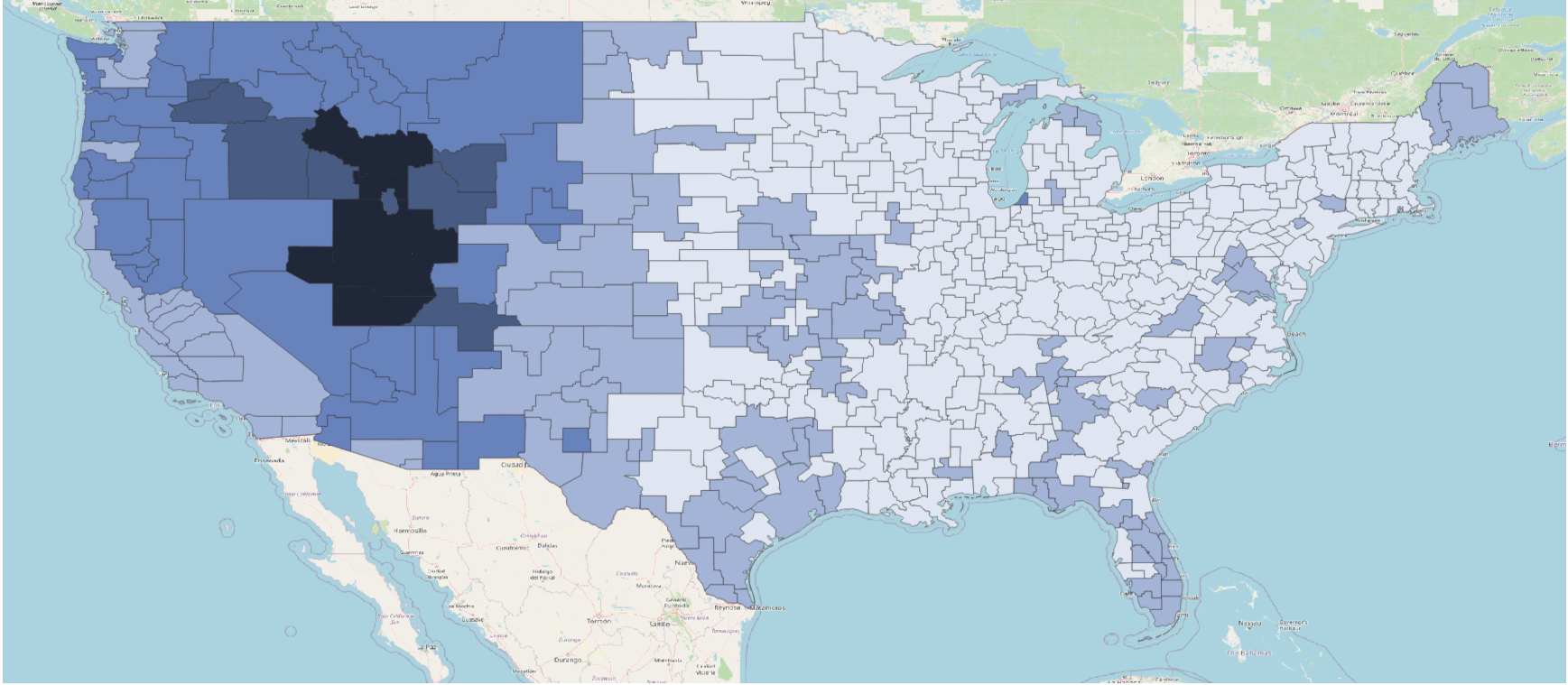Cluster B: Restorationist Movements
Restorationist Movements, including Jehovah's Witnesses, Latter Day Saints, and Adventism, share a commitment to restoring true Christianity with unique beliefs.
The Restorationist Movements cluster group encompasses Jehovah's Witnesses, the Latter Day Saints Movement, and Adventism. These lifeways share common themes rooted in the restoration of what they perceive as true Christianity and a deep commitment to biblical teachings. Central to these lifeways is the concept of restoring authentic Christianity, as defined by their interpretation of the Bible.



The darkest areas in the thematic density map indicate the places with the highest percentage of population.
Focus on Restoring Authentic Christianity
Central to these lifeways is the concept of restoring authentic Christianity, as defined by their interpretation of the Bible. Jehovah's Witnesses anticipate the imminent establishment of God's Kingdom on Earth. The Latter-day Saints Movement believes in the restoration of true Christianity through Joseph Smith and the Book of Mormon, which they consider sacred alongside the Bible. Adventism centers on the restoration of Sabbath observance and eagerly awaits the return of Jesus Christ, all based on their interpretation of biblical prophecies.
Unique Beliefs and Practices
Moreover, these lifeways are characterized by their unique and sometimes controversial beliefs and practices. Jehovah's Witnesses are recognized for their door-to-door evangelism, rejection of traditional Christian doctrines like the Trinity, and unwavering neutrality in worldly matters. The Latter-day Saints Movement introduces distinctive doctrines, including the belief in a Godhead comprising three distinct beings and the potential for humans to become gods in the afterlife. Adventists set themselves apart through the observance of the seventh-day Sabbath and a health-conscious lifestyle, frequently adopting vegetarianism based on Ellen White’s writings. These singular beliefs distinguish them from mainstream Christians.
Centralized Institutional Structures
In addition, these lifeways exhibit strong organizational structures and hierarchies that are responsible for administrative functions, literature publication, and educational institutions.


